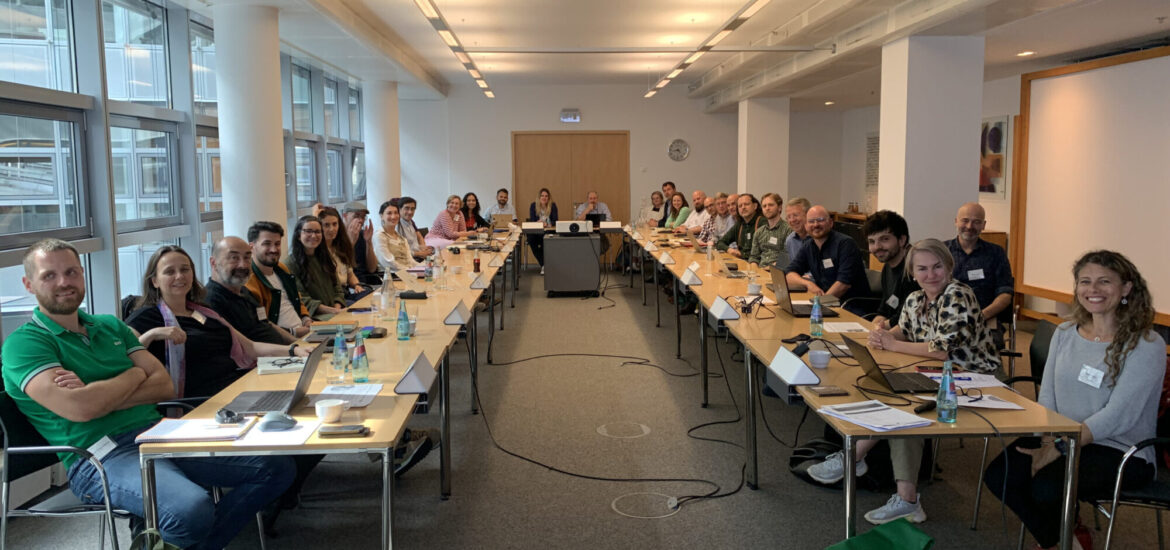The CLIMOS project is excited to wrap up the recent foresight stakeholder workshop titled “Envisioning the Future for an Early Warning System (EWS) for Sand Fly-borne Diseases in Europe.” This significant event, held at the Helmholtz Association in Berlin, was coordinated by the Institute for Technology Assessment and Systems Analysis (ITAS) from Karlsruhe Institute of Technology (KIT) and Trilateral Research.
Workshop objectives and goals
The primary aim of this workshop was to develop qualitative scenarios exploring the role of Early Warning Systems (EWS) by 2050. Participants engaged in reflective discussions on their current experiences and requirements for EWS, particularly focusing on how such tools can mitigate the spread and impact of Leishmania and other vector-borne diseases.
The urgent issue of sand fly-borne diseases, exacerbated by climate change, environmental changes, and globalization, has fueled research interests in this field. This research is crucial for predicting the spread of these diseases to new areas and increasing their prevalence in regions where they are already endemic.
CLIMOS project’s objectives and goals
The CLIMOS project aims to support the creation of an Early Warning System (EWS) for all endemic sand fly vectors, major pathogens (Leishmania parasites and Phleboviruses), and sand fly-related health infections and potential diseases. This forward-looking approach will generate predictions to inform policy recommendations, provide interactive risk management maps, and conduct cost and benefit assessments for adaptation strategies.
Stakeholder Engagement and Co-creation Workshop
The CLIMOS Foresight Stakeholder Workshop served as an excellent networking opportunity for Public Health Authorities, veterinarians, pharmaceuticals, researchers, patients, and experts in vector-borne diseases, particularly Phlebotomine sand flies.
Participants collaborated in developing qualitative scenarios to explore the future role of EWS by 2050. These scenarios reflected on current experiences and requirements, helping to understand how EWS can mitigate Leishmania and other vector-borne diseases.
The workshop was conceptualized and facilitated by Dr. Maria João Maia and Dr. Tally Hatzakis with the support of the CLIMOS project consortium.
The key messages that emerge from the event were:
- We need to monitor a wider range of domestic and wild animals to better understand the pervasiveness of sand fly-borne diseases
- There is a need to have a closer monitoring of the ecosystem, meaning to consider the relationship between animals, humans and the environment, as described in the One Health approach. This implies a better understanding of how the environment influences the proliferation of SF and how people interact with all those species to really understand the vector borne risks for humans.
- Species will adapt to different climatic conditions and human activity will introduce sand fly-borne diseases in non-endemic areas, regions and countries, so we need to open the geographic scope we surveil
- We need to have data that reflects the reality of SFBDs cases, both in animals and in humans. The available reported data is scarce since it is not mandatory in several countries and professionals lack the time to report it
- We need to open the lines of communication between scientists and public health and civil protection policy makers and public servants when it comes to understanding, warning and dealing with sand fly-borne diseases
- With the increasing travel of people and pets to endemic countries there is a need to alert travelers about prevention measures and educate them about potential symptoms of SFDB that they should be aware of and alert their doctor, in case of need. This information should be included in the standard Foreign Travel Advise, for both animals and people.
- Implement a set of procedures such as: screening actions, raising awareness to vets and medical professionals about endemic places and measures to avoid SFBD, The CLIMOS project extends its gratitude for the invaluable insights shared by all involved stakeholders. Together, we can make a significant difference in preventing sand fly-borne diseases.
Join our stakeholder network
If you would like to be involved in future co-creation activities and contribute to the development of Early Warning Systems, join our stakeholder network. Learn more about our initiatives and how you can participate here 
Thank you for your support and dedication to advancing public health through innovative solutions!










